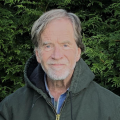 TL; DR :: Offering just below the drive-through window for those who have to keep moving on a Friday. Following—the summary of the A QUANTUM COMPUTER BRAIN, created by the GhostReader AI function within my curation tool called Readwise:
TL; DR :: Offering just below the drive-through window for those who have to keep moving on a Friday. Following—the summary of the A QUANTUM COMPUTER BRAIN, created by the GhostReader AI function within my curation tool called Readwise:
The meeting of neurosciences and quantum physics has led to a theory that the human brain network is full of geometrical structures operating in many dimensions, which may exist as a field surrounding the brain in a parallel universe.
Scientists have attempted to explain the neural mechanisms by quantum theory and search for similarities between the human brain and the quantum computer. Some believe that consciousness is not confined to the physical brain and that it exists in a field surrounding the brain, which shares information with the brain through quantum entanglement.
Recently, a team of neuroscientists from the Blue Brain Project discovered that neural networks in the brain contain a surprisingly elevated number of cliques that might conduct to its size as a high-dimensional geometric object.
This information comes along many months since I first became interested in the role that quantum biology might play in the phenomenon of consciousness. This is a developing field of study I will continue to follow. I confess that It is far too broad and deep to fully sink into most lay-person brains like mine.
Science Gets Weird
As woo-woo as it might sound, the idea of “non-locality” or quantum entanglement may apply to neurons (or their microtubules according to some). These early findings may lend support to the recently-resurrected but ancient notion of panpsychism. The idea proposes that consciousness is a “foundational property” of the universe, and that it is a process mediated by but not originating in the physical brain itself.
This notion was promoted by two well-known scientists, Roger Penrose and Stuart Hameroff (and more than a few others, since).
In the mid-1990s Stuart Hameroff, anesthesiologist, professor, and director of the Center for Consciousness Studies, The University of Arizona, and Roger Penrose, Professor of Mathematics at the University of Oxford put forward a new brain theory, known as Orch-OR (Orchestrated Objective Reduction). They suggest that quantum processes play an important role in human consciousness.
At the root of the Penrose-Hameroff theory, there are some tiny protein structures inside the brain cells, called microtubules, whose key role is to organize the form and function of a cell.
They suggest that microtubules allow neurons and the brain to function as a whole, performing operations like a quantum computer.
“…The origin of consciousness reflects our place in the universe, the nature of our existence. Did consciousness develop from complex computations among brain neurons, as most scientists assert? Or has consciousness, in some sense, been here all along, as spiritual approaches maintain?” ask Hameroff and Penrose in Physics of Life Reviews.
Other research finds that complex higher-dimensional geometries exist as “sandcastles that materialize and disintegrate on a constant basis in the conscious brain. There may be much more to thinking and remembering and feeling and knowing–in our multi-dimensional quantum orchestra, as the authors describe the brain in action.
Back in the Saddle Again
So having just returned yesterday from a very rare three-day excursion that included a 75 year old boney booty sitting on a mountain bike for 4 hours, I am back among the spinning-plates vaudeville act that is my life. This is one of several other topics I try to stay apace with. Good to be back in the saddle (but NOT on that un-natural and anatomically-incorrect bicycle seat!)
Additional reading (for the purpose of tying topics together in my own mind.) YMMV.
Are Microtubules the Brain of the Neuron?
Cliques of Neurons Bound into Cavities Provide a Missing Link between Structure and Function
The Human Brain Is Capable of Building Structures With Up to 11 Dimensions

 Fred First holds masters degrees in Vertebrate Zoology and physical therapy, and has been a biology teacher and physical therapist by profession. He moved to southwest Virginia in 1975 and to Floyd County in 1997. He maintains a daily photo-blog, broadcasts essays on the Roanoke NPR station, and contributes regular columns for the Floyd Press and Roanoke’s Star Sentinel. His two non-fiction books, Slow Road Home and his recent What We Hold in Our Hands, celebrate the riches that we possess in our families and communities, our natural bounty, social capital and Appalachian cultures old and new. He has served on the Jacksonville Center Board of Directors and is newly active in the Sustain Floyd organization. He lives in northeastern Floyd County on the headwaters of the Roanoke River.
Fred First holds masters degrees in Vertebrate Zoology and physical therapy, and has been a biology teacher and physical therapist by profession. He moved to southwest Virginia in 1975 and to Floyd County in 1997. He maintains a daily photo-blog, broadcasts essays on the Roanoke NPR station, and contributes regular columns for the Floyd Press and Roanoke’s Star Sentinel. His two non-fiction books, Slow Road Home and his recent What We Hold in Our Hands, celebrate the riches that we possess in our families and communities, our natural bounty, social capital and Appalachian cultures old and new. He has served on the Jacksonville Center Board of Directors and is newly active in the Sustain Floyd organization. He lives in northeastern Floyd County on the headwaters of the Roanoke River.